In this post, I critically illustrate with appropriate examples how each of the centres below will help generate language in children;
Art Centre
The Art corner in a particular school-nursery, preschool, kindergarten or primary school is highly linked creativity in the classroom and life in general. The definitions of creativity vary considerably. From the perspective of language development in children, creativity is simply defined as the proactive, purposeful impulse to extend beyond the present, characterized by originality, imagination, and fantasy, with an outcome that propel individual brainstorming. Sharing the taught processes or questioning adult’s creativity usually foster language development.
An art corner can be used to generate language in this way; in the corner, by looking at five paintings that depict various aspects of community life, the children make predictions about what they see in the paintings and the artists’ motivation to paint the scene, answer questions asked by their peers and the teacher, and observe and discuss five attributes common to all communities. The teacher introduces each concept through one painting, then provide a variety of read-aloud, literature-based activities, role-playing stimulation, art projects, and guest speakers to enhance and build on the community focus they have originally discussed and observed in each of the paintings. Each child completes an independent self-study of the paintings by answering questions, writing their own questions, and making predictions about the people, places, things, and activities he sees in the painting. Finally, the class can discuss their ideas about painting as a group. All these processes lead to language generation and development in children.
Music Corner
The impact of music in language generation and its development cannot be overemphasized. Music, like art, is a basic way of learning, experiencing, and communicating. All children deserve a rich musical environment in which to learn to sing, to play music, to move, and to listen. Music is also a valuable tool for helping children to gain content knowledge and make sense of their experiences. Music is a pervasive influence in our lives. We hear music when we worship, exercise, relax, drive, and attend baptisms, weddings, and funerals.
The starting time for learning about music is the same as the starting time for any learning. Music is facet of the total education of the child. It must emerge with the nature and needs of the child from birth onward. The music corner is a centre where children experiment with sounds while they their own music. They gain appreciation and love of music that will bring them enjoyment for years to come. Some of the materials found in the corner include books that are song, radios, scarves, drums, pianos, cymbals, bells, shakers, mirror, area rug, dance rug, recorders, hats, CD players and CDs.
To generate language in children using the music corner as an aid, a teacher needs to encourage hers pupils to appreciate, and examine different styles of music as well as create dance presentations that are specifically related to the music. She then plays the music and ask her pupils to listen to it carefully, think about what it is about and how it makes them feel. She plays the music again and asks her students to move to the music. If the music is fast, she encourages them to move fast. At the same time, she asks hers students to show and explain how the music makes them feel, happy, sad, and so forth. Fulfilling these skills of listening, getting move as a result of the song, and the explaining the feelings helps children to increase oral communication skills, vocabulary and listening skills, develop an appreciation for poetry and rhythm, and increase auditory discrimination skills. Thus, language is generated and continued development fostered.
Mathematics Corner
Mathematics as a subject filters into almost every aspect of learning in the education realm. Children learn mathematics and science from the manipulation of objects and their discovery of relationships and patterns in their environments. Mathematics means much more than just arithmetic. To children math means practicing arithmetic: working addition, subtraction, and multiplication problems on reams of ditto sheets. The central objective of teaching mathematics to young children is embedded on the strand model. The content of the strand includes Algebra (Patterns and Functions), Geometry, Measurement, and Data Analysis and probability is represented on the model; Number and Operations are at the centre because they are used to solve problem in all strands. The process strands-Problem Solving, Communications, Connections, Reasoning and Proof, and Representation-surround the content strands because good instruction embeds the content within the framework created by the process strands. As can be seen, communication (in this case language generation in children) stands as the core objective. Hence the importance of the mathematics corner in every Early Childhood classroom setting cannot be overstressed.
A clear example to generate language in children would be a session on Mental Math from the math corner. The teacher carries the children to the corner for mental math. After showing them round, the teacher asks questions such as; The number of seeds in a package, which plants will grow taller, how many flowers will bloom on each plant, the colour that yields the most plants or flowers, the number of days in the various months of the year, the number of colours in a rainbow. At this early stage, the answers are required in oral. The children efforts in doing this leads garners their language generation and development.
Dramatic Play Corner
Young children love make-believe activities. The Dramatic Play Center allows children the opportunity to act out their real world. They can experience different roles, express feelings, and imitate actions and character traits of those around them. It is a place where the most creative, spontaneous, and involved play occurs. The open-endedness of the dramatic play center allows each child to be successful on their own developmental level.
An increasing amount of research continues to support play in early childhood development, and there are five primary forms or types of play in which children engage: locomotive, social, object, language and pretend play. Each type of play has its own benefits for the developing mind of a young child, and while each is important, pretend play (otherwise known as imaginative or dramatic play) is becoming an increasingly popular component in toddler and preschool education.
Dramatic play is defined by experts as a type of play where children assign and accept roles and act them out. For example, child who pretends to feed and rock a doll to sleep is engaging in dramatic play, or a child who pretends to fix a leaky faucet in the play kitchen is engaging in dramatic play. This is a time for a child to pretend to be someone or something else, and while pretending may just look like “playing”, it is integral to the developmental learning process.
There are four primary areas under which children learn and develop through pretend play. They include:
- Intellectual – increase in skills such as problem solving, negotiating, creativity, organizing and planning, retelling familiar stories, application of newly gained knowledge, and mathematics
- Physical – increase in skills such as gross and fin motor development, fitness, strength, and coordination
- Social – development of skills such as sharing, taking turns, cooperation, negotiation, impulse control, delay gratification, and deal with disappointment
- Emotional – increase in self-esteem, pride and accomplishment, feeling of safety and protection, development of sense of self and individuality, and feelings or purpose
Experts agree that dramatic play is an integral part of a well-rounded preschool program as it is healthy for early childhood development. Through dramatic play, children learn a myriad of skills, especially language development.
Literacy Centre
Learning to talk is one of the most visible and important achievements of early childhood. New language tools mean new opportunities for social understanding, for learning about the world, for sharing experience, pleasures and needs. Then, in the first three years of school, children take another big step in language development as they lead to read. Although these two domains are distinct, they are also related. Early-language skills have been linked to later successful reading. As well, pre-literacy and literacy activities can help further children’s language competencies in both the preschool years and later schooling.
Children with poor listening and speaking skills are referred to as having language impairment.
Long before a child begins to speak, he is already communicating with the world around him. From a very young age, a baby knows that a cry will draw a parent’s attention and that holding out his arms means “pick me up”.
And long before a child learns to read and write, he has already embarked on the path to literacy. Playing with a book, pointing to a sign or scribbling on a piece of paper – all of these are signs of emergent literacy.
Research shows that when adults create rich language and literacy environments and respond to a preschool child’s communication in specific ways, they can boost that child’s emergent language and literacy development and increase the likelihood of future academic success. And the adults with the greatest potential to help are the most important ones in that child’s life: his parents and caregivers, including child care providers and early childhood educators (ECEs).
Whether a child is developing typically or has a language delay, there is so much that parents and educators can do to promote not only his language and early literacy development, but to encourage him to be an active, confident communicator. They can, for example, help build his vocabulary and use of language, which supports problem-solving, and the ability to use one’s imagination – all of which are fundamental to the kind of sophisticated language a child needs to succeed in school.
And the good news is that parents and educators can do this without having to carve out new time in their day. Simply by tweaking the way they interact with children during everyday conversations, routines and activities, parents and educators can foster the strong language and literacy skills that are so essential for lifelong social and academic success. Examples:
Begin with a foundation of oral language development. Conversations are a powerhouse for learning. Carefully guided, conversations can impact children’s vocabulary, help them learn patience and empathy, and progress toward unlocking the alphabetic code. They can expand thinking and knowledge. Conversation stimulates core brain cells, which later become a foundation for the more complex connections needed to read.
- Carve out time each day for interesting, extended conversations using lots of different (and complex) words. Carefully place objects in centres to spark such discussions.
- Use talk to help young children explore and understand their world. Encourage the inquisitive. Honour honest questions with a thoughtful, thorough response.
- Help children tell or retell stories as they view pictures, share something important to them, and answer questions in complete, complex sentences.
Partner conversations with read-aloud time. The more naturally you share a story, the more engaged the children will be. Read aloud often to your whole class, but also interact with books in small groups or with individuals. Invite parents in to share their favourites from a list.
- Preview and pre-read each book carefully. Ask yourself, “What questions might arise in my children’s minds? What might they be interested in learning more about?”
- Pause from time to time for mini “think-aloud” or mini discussions. Use the magic words “Let’s see what happens next” if you find conversation straying too far.
Work bench Centre
This corner is a place filled with materials that children can enjoy on a purely sensory level. Here children can create and represent their ideas in a visual form. On a table or floor, at an easel or a workbench, children draw, paint, knead, cut, glue, and make things of their own choosing. Sometimes they simply explore the materials and enjoy the process. At other times they create design or make something that represents a real object, place or living thing.
In generating and developing language, children often talk about what they are doing and respond to questions about their creations as they engage in art work in this corner. Teachers can write down what children say about their artwork as a permanent record of the experience. Art also fosters vocabulary development as children learn to use related technical vocabulary: sculpture, palette, and clamp to name just a few terms.
Cognitive-Children draw, paint and sculpt what they want. As they translate their ideas and feelings into art, they use thinking skills to plan, organize, select media and represent their impressions. When children draw, paint and make collages, they experiment with color, lines, shapes and sizes. Using paints, fabrics and woodworking tools they make choices, try ideas, plan and experiment. They learn about cause and effect when they mix colors. Through trial and error, they learn how to balance mobiles and weave yarn.
Outdoor Play Centre
Although it is simple to compile a list of play activities, it is much more difficult to define play. Scales, et al., (1991) called play “that absorbing activity in which healthy young children participate with enthusiasm and abandon”. Csikszentmihalyi (1981) described play as “a subset of life…, an arrangement in which one can practice behaviour without dreading its consequences.
According to Webster’s Desk Dictionary of the English Language, the word play has 34 different meanings. In terms of young children and play, the following definitions from Webster’s are useful:
- light, brisk, or changing movement (e.g., to pretend you’re a butterfly)
- to act or imitate the part of a person or character (e.g., to play house)
- to employ a piece of equipment (e.g., to play blocks)
- exercise or activity for amusement or recreation (e.g., to play tag)
- fun or jest, as opposed to seriousness (e.g., to play peek-a-boo or sing a silly song)
- the action of a game (e.g., to play duck-duck-goose)
Outdoor play enhances language development, social competence, creativity, imagination, and thinking skills.
Outdoor play and Cognitive Development
The relationship between play and cognitive development is described differently in the two theories of cognitive development which dominate early childhood education-Piaget’s and Vygotsky’s.
Piaget (1962) defined play as assimilation, or the child’s efforts to make environmental stimuli match his or her own concepts. Piagetian theory holds that play, in and of itself, does not necessarily result in the formation of new cognitive structures. Piaget claimed that play was just for pleasure, and while it allowed children to practice things they had previously learned, it did not necessarily result in the learning of new things. In other words, play reflects what the child has already learned but does necessarily teach the child anything new. In this view, play is seen as a “process reflective of emerging symbolic development, but contributing little to it”
Observations of children at play yield examples to support both Piagetian and Vygotskian theories of play. A child who puts on a raincoat and a firefighter’s hat and rushes to rescue his teddy bear from the pretend flames in his play house is practicing what he has previously learned about fire fighters. This supports Piaget’s theory. On the other hand, a child in the block center who announces to his teacher, “Look! When I put these two square blocks together, I get a rectangle!” has constructed new knowledge through her play. This supports Vygotsky’s theory. Whether children are practicing what they have learned in other settings or are constructing new knowledge, it is clear that play has a valuable role in the early childhood classroom. In summary, outdoor play plays a pivotal role in the language generation and development of children.
Block Centre
Block play is a valuable learning tool for young children of all ages. By setting aside an area for block play within the child care space, child care providers are creating an area for imaginative cooperative play. Children playing with blocks are practicing a wide variety of developmental skills, including manipulating objects, creating structures, and working together.
The block area is an ideal place for children to practice new vocabulary by using words to describe types of buildings, shapes, and structures. When planning a structure together, children must use verbal communication skills. Child care providers can enhance language skills in the block area by using new vocabulary words, encouraging children to describe their structures and their building process, and encouraging children to write stories about the structures they create.
Blocks provide the materials for children to create structures and designs limited only by their own imaginations. Often, the block area becomes the dramatic area as children act out scene or stories using props or playing the actors themselves.
When children play with blocks, they are working on problem solving and early math concepts. As they play, explore and experiment with blocks, children learn about the qualities of the materials. They are learning about size, shape, weight, texture, and color. As their play progresses, and children begin to build with blocks, they begin to learn about length, height, volume and physical space.
Children build strength in their hands when they pick up blocks and stack or fit them together. Stacking and fitting blocks together develops fine motor skills and eye-hand coordination.
Finally, Children learn to cooperate and work together when they play with blocks. Children also learn to respect or value their own structures, and those of other children.
Block play tends to follow a predictable developmental sequence, becoming increasingly more complex as children progress.
Stage 1: Carrying and Dumping
In the beginning, children tend to carry the blocks around or put them into containers and transport them or dump them back out again. At this stage children are learning about what blocks do and their different qualities – how they feel, how heavy they are, what it sounds like when they drop or dump the blocks.
Stage 2: Towers and Roads
In the next stage children will start to stack blocks vertically to create towers or buildings and lay them out horizontally into roads. Make sure to include props and cars in the block area to promote this open-ended imaginative play.
Stage 3: Constructing
This is the stage where children begin to connect two sets of blocks to form a bridge, build enclosures, and create designs and patterns. When children are constructing with blocks they are practicing balance, working on eye-hand coordination, exploring special relationships, and learning basic math concepts like geometry and area. They often use their bridges and enclosures in dramatic play.
Stage 4: Designing Complex Structures
At this point, children will start to label or tell you what they are building. They have become quite skilled at combining different sizes and shapes of blocks to create complex structures, sometimes using other materials from the classroom or outdoor space. Children will often work together to construct very elaborate structures, and take pride in their masterpieces, wanting to show others what they have created. You might want to take a photo for them to have even after the structure is dismantled.
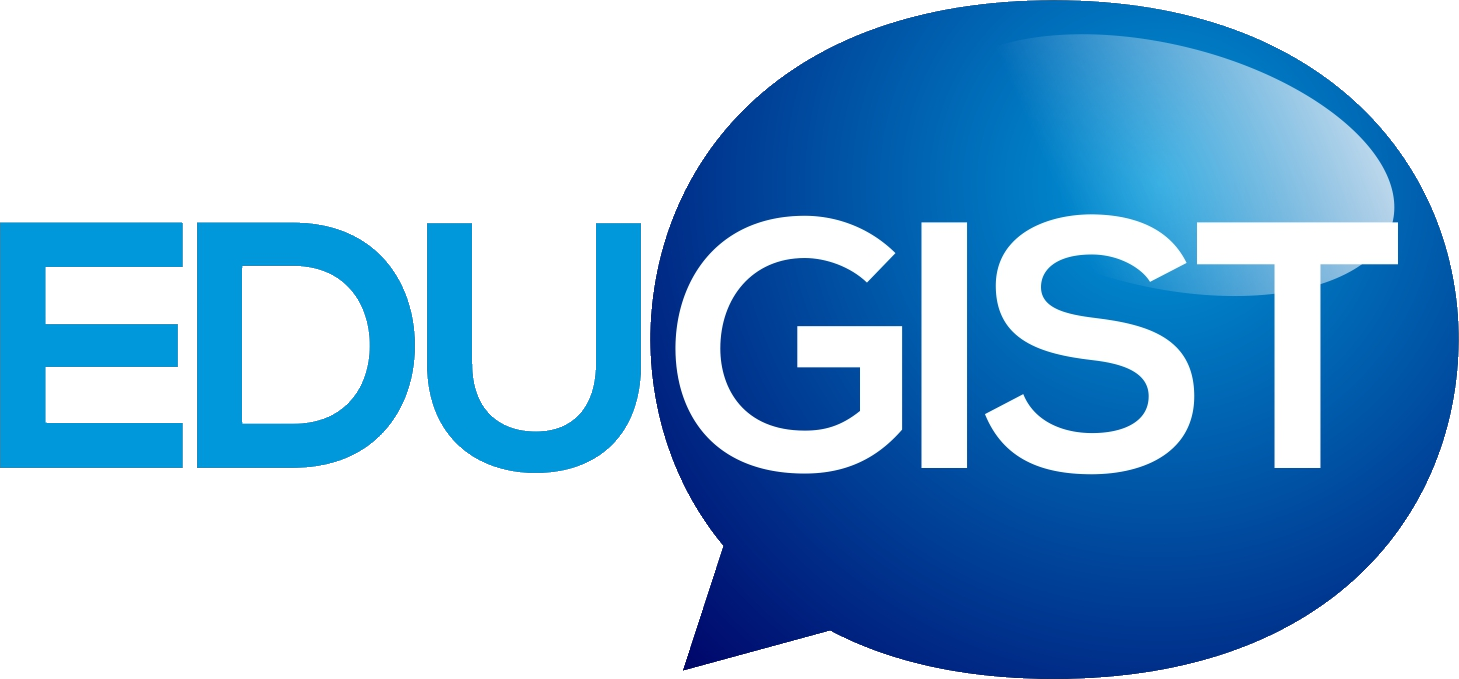


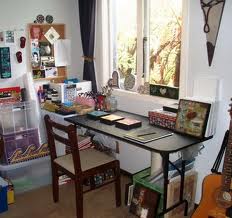
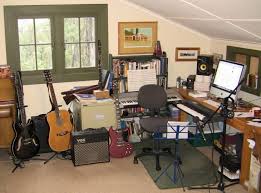
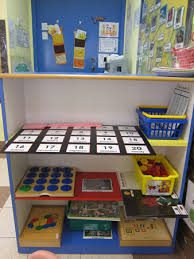
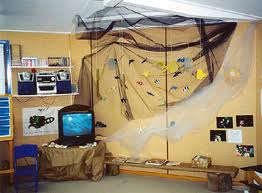
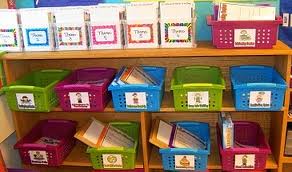
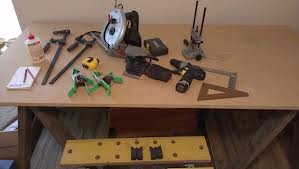
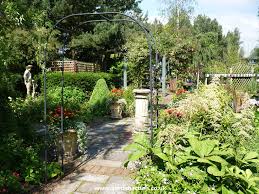
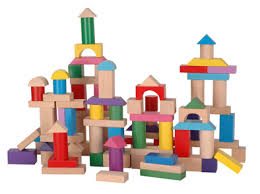

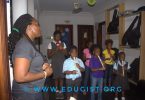
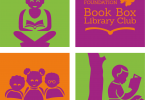
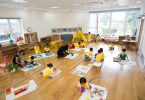


Good Afternoon sir,
I find your article so interesting,educating,imaginative and also pushes me to implement the points you’ve given to see how my niece will respond. I’m an early childhood educator as well. I gratuated from tai solarin university of education 2 years ago. I’ll love to know more and probably meet professionals like you to learn quality ideas dealing with children.
My warm regards Ibrahim, thanks for taking out time to read the post and am happy it was educative. check the contact page of the blog, you’ll see my contacts. From there we can talk. Kindly like the FaceBook page, follow me on Twitter and share with your friends that share the same interest. Collectively, we can make being a teacher and ECE teacher for that matter a ‘viable’ profession.
Good Afternoon sir,
I find your article so interesting,educating,imaginative and also pushes me to implement the points you’ve given to see how my niece will respond. I’m an early childhood educator as well. I gratuated from tai solarin university of education 2 years ago. I’ll love to know more and probably meet professionals like you to learn quality ideas dealing with children.
My warm regards Ibrahim, thanks for taking out time to read the post and am happy it was educative. check the contact page of the blog, you’ll see my contacts. From there we can talk. Kindly like the FaceBook page, follow me on Twitter and share with your friends that share the same interest. Collectively, we can make being a teacher and ECE teacher for that matter a ‘viable’ profession.
I see a lot of interesting articles on your page.
You have to spend a lot of time writing, i know how
to save you a lot of time, there is a tool that creates high quality, SEO
friendly posts in couple of seconds, just search in google – k2 unlimited content
I see a lot of interesting articles on your page.
You have to spend a lot of time writing, i know how
to save you a lot of time, there is a tool that creates high quality, SEO
friendly posts in couple of seconds, just search in google – k2 unlimited content
I read a lot of interesting articles here. Probably you spend a lot
of time writing, i know how to save you a lot of time, there is an online tool that creates
readable, google friendly articles in minutes, just search in google
I read a lot of interesting articles here. Probably you spend a lot
of time writing, i know how to save you a lot of time, there is an online tool that creates
readable, google friendly articles in minutes, just search in google